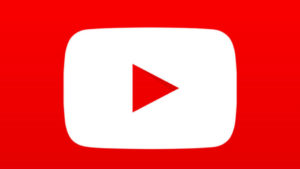You’ve spent an excruciating amount of time mapping your video marketing strategy. You’ve spent even more time planning, producing, and polishing your latest piece. The moment has come. You’re rolling out.
Soon, your world falls apart because of a few video marketing mistakes.
You monitor the incoming activity which oscillates between disinterest and interest for the wrong reasons. Your viewers are expressing their disapproval in a number of ways. Some themes emerge:
- High exit rates
- Low total view time
- Low completion rates
- Low like:dislike ratio
- “Colorful” comments
- Toxic social shares
- Low CTR
- Low conversion rates on associated offers
What went wrong?
(Click)Bait and Switch
The “bait-and-switch” method of video marketing promises gold but delivers cardboard. Cheeky creators often employ dubious tactics like selecting misleading thumbnails, cover photos, and headlines to capture initial viewer interest. They either keep up the ruse for a short period or quickly detour into the actual agenda of the video. Regardless, it usually ends poorly for everyone involved. Viewers become extremely angry and the creator receives of firestorm of negative actions.
Why would someone do this? Assuming he/she isn’t trolling, many creators attempt to game the system by encouraging massive traffic within the first 24 hours of publication. This tactic – which over-emphasizes the importance of views as a primary ranking factor – used to be successful in the very early days of YouTube SEO. Nowadays, YouTube’s complex search ranking algorithm contains a myriad of different variables that stress social proof (e.g. likes, comments) and sustained value generation (e.g. subscriptions, total watch time, audience retention).
Wander Around
A 2010 Visible Measures study concluded that nearly 20% of your audience departs after 10 seconds of video content they deem irrelevant or unworthy of their time. Think of all the excellent content that competes with your message. Your competitors eagerly await all of the traffic and goodwill that leaves because audiences can’t stand to finish your video.
How can you avoid this?
- Cut straight to the point especially if your video is specifically designed to solve a problem.
- If your video is part of a series, quickly recap previous events to re-establish context.
- Save your branding (e.g. custom placards with your logo, contact information, call(s) to action) for the end of the video.
Make Their Ears Bleed
This phenomenon is largely the product of ignorance. Careful sound recording can prevent many headaches for your editors when they mix and master your final product. However, we realize not every situation can be handled in a perfect environment.
Capturing live events is a wonderful strategy to incorporate into your video marketing. However, the rush to be first in publishing momentous content (e.g. during/after a major industry gathering) can cloud your judgment. In other words, you may ignore or overlook certain aspects of the user experience like the actual sound levels your viewers hear.
(TURN DOWN YOUR VOLUME BEFORE CLICKING THIS)
We know this isn’t easy. You might be competing with:
- Live music
- Crowd noise
- Poor acoustics
Always proof your video before posting, regardless if it’s self-hosted, hosted on YouTube, or a social platform like Facebook/Instagram/Vine. Your viewers will thank you for that.
Split Your Audio from Your Visuals
Have you ever seen videos where a talking head speaks but their words lag behind? You move onto the next scene but are now just hearing what she said? If what is seen doesn’t match with what is said, you’re in for some trouble. This gaffe can derail your explainer videos, tutorials, and other video marketing pieces. When the time between your pictures and your sound increases, the patience of your viewers decreases.
Make Them Dizzy and Disoriented
A common complaint leveled against all levels of video storytelling ranging from short clips to Hollywood blockbusters is the nauseating effect of the “shaky camera.” This technique was initially championed because creators preferred the greater kinetic or spontaneous experience/intimacy with actors/subjects of a scene. Done correctly, the handheld camera style emphasizes the present timeliness at hand, conveying urgency in a docu-realistic fashion.
We understand its temptations. Setting up camera placements, lights, and precise blocking can be very time-consuming and costly. This task can be very difficult for in-house teams lacking specialized production personnel. On the other, handheld camera offers you certain degrees of freedom in capturing movement, reactions, and storytelling other strategies lack. But, beware!
Recognizing a potential problem concerning inconsistent footage, image stabilization tools have been introduced in pretty much every major video recording app and technology including YouTube’s own editing system. However, these tools can only do so much to wrangle a carefree camera.
We’re not targeting just the stylistic choices that occur during production. How you edit your final product can directly impact how viewers absorb or reject your message. Overly-chaotic and “busy” editing that features rapid-fire cutting, transitions, or abrupt changes alienate your audiences. Viewers lose sight of your meaning and offering if they cannot keep up with what’s happening in front of their eyes. When a viewer diverts his attention to your disruptive presentation instead of your message, you’ve already lost his trust.
When a viewer diverts his attention to your disruptive presentation instead of your message, you’ve already lost his trust.
Terrible Picture Quality
Ask yourself: what is the viewing context of your average customer? In other words, where and when are they watching your video(s)? Are they seeing them on television, a desktop, a laptop, a tablet, or a smart phone? Will quality be compromised across different touch-points?
Now understand the context of your video’s value proposition. If you make high end knives for culinary arts, it makes sense to invest more effort in producing sumptuous visuals that really highlight the benefits of your products and how beautiful the cooking process can be. On the other hand, a testimonial (think unboxing videos) shot on a webcam may possess a greater sense of objectivity compared to a glossy, professional studio shoot clearly commissioned by a brand.
With that said, your average customer may not care too much about picture quality unless it’s glaringly awful. Ask yourself, should they care? Remember, other key factors like the watching experience, emotions, and story keep viewers in place when picture quality is lackluster. You have plenty of options in recording high definition footage without an exorbitant budget.
End Before a Payoff
This concept seems almost impossible to put into practice yet it occurs. If you promise something to your audience (e.g. a tutorial, a review, a testimonial), deliver it within a reasonable time frame. Do not string viewers along or make them jump through extraordinary hoops just so they can finally get the content they desire. Valuable, straightforward content sells itself. Be ready with an even better follow-up offer to transform visitors into leads and potential customers.




THE 2 worst techniques of all are ‘shaky camera’ and jump-cuts. Creators somehow believe this adds ‘immediacy’ to the scene – _wrong_! Unless it’s a 5 sec filler of the cameraman chasing a cop chasing as bad-guy, these techniques never add to the production. It’s as tho people see things that way – bobbing and moving their heads and eyes. Dark, brooding shots are also off-putting. Why is ‘Goldfinger’ on TV every night (aside from ‘007’), – big bright scenes that take the viewer away from their drab world.
Pingback: 4 Video Marketing Truths That Suck to Hear
Pingback: 5 Inbound Video Marketing Lessons from HubSpot